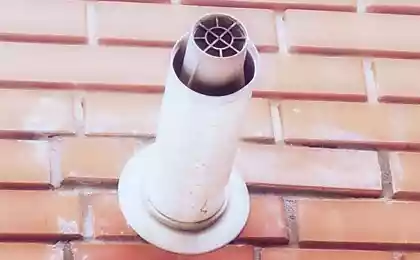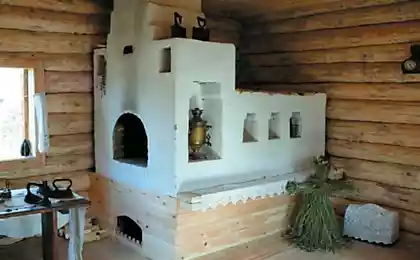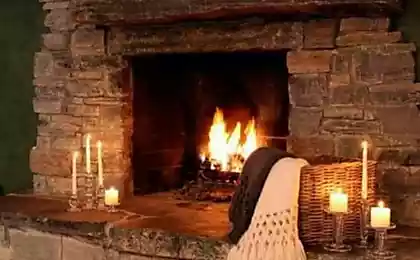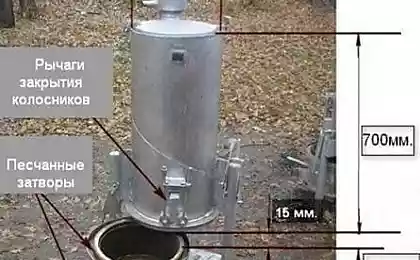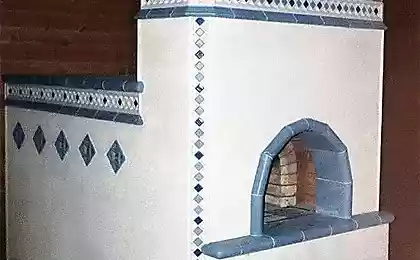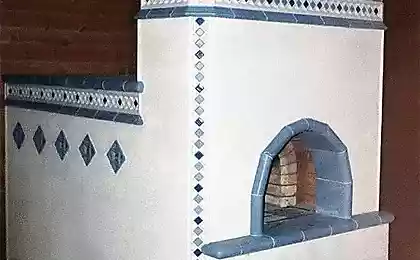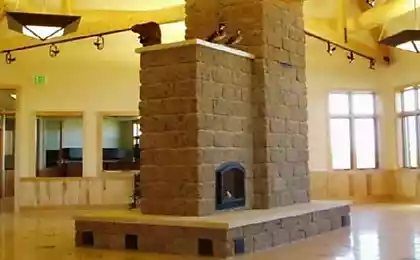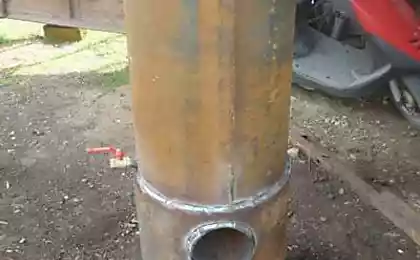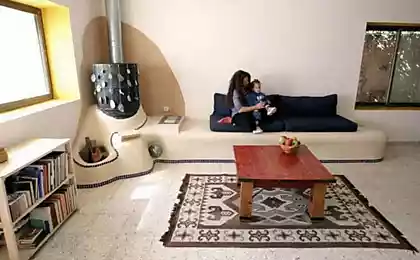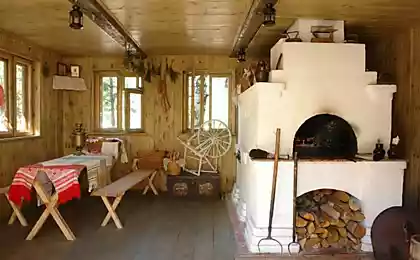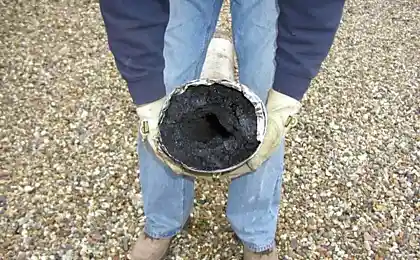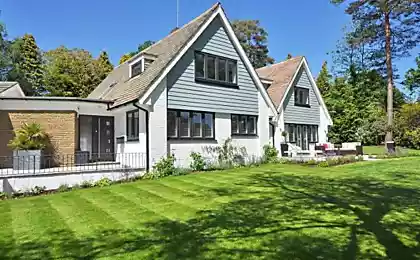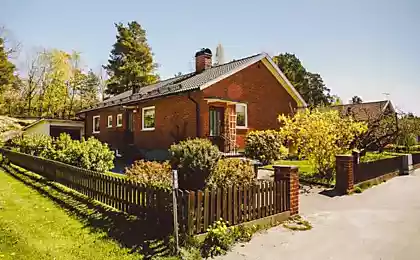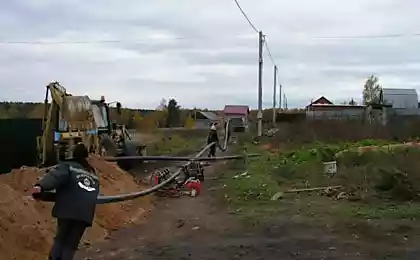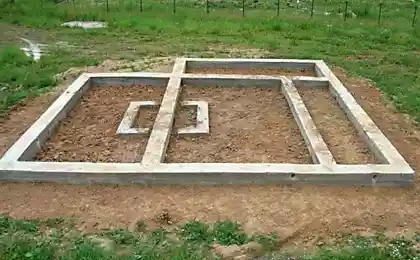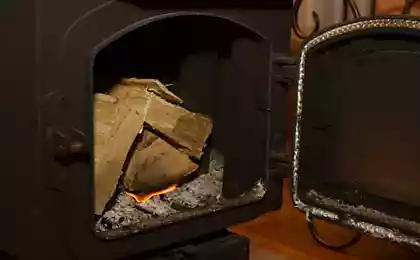553
The device of the chimney in a private house and its proper use
Any heating system needs in the chimney. Proper installation of outdoor chimney affects the efficiency of the heating system, as well as its safety. That is why the organization of this element of your private home should be approached with great responsibility.
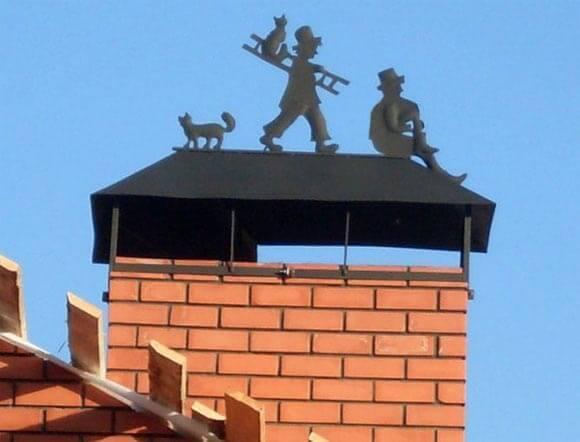
According to the General classification, there are following 3 type of construction of chimneys:
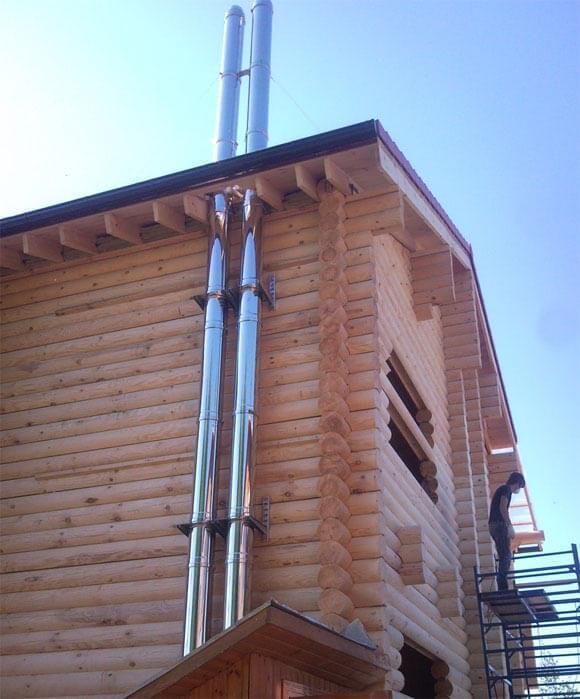
Device wall of the chimneyFlue cannot be arranged at the intersections of the walls or at the corners of the building. The thickness of the walls of the chimney must not be less than half brick. In order to attach the stove or fireplace to stenosoma the chimney, it is necessary to equip the sleeve. These subassemblies are part of the flue and have a horizontal direction. Rocker sleeve spread from a brick, the length of elements should not exceed 2 metres . In order to create sleeves, you need to take 2 steel area. The corners of the close up in the fireplace at the stage of its construction. They are placed at 6-7 cm below the excretory canal. The free ends of the elements close up in the chimney. They are placed in the pipe at the same distance from the output channel (6-7 cm). The parts are placed either horizontally or with a small bias towards output smoke. Formed on the basis of the corners of the laid brick, placing it flat (hence the distance of 6-7 cm.)
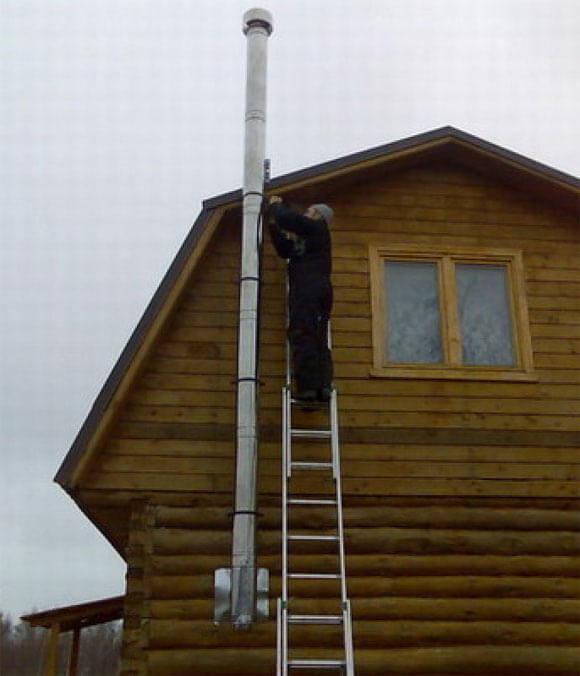
The wall sleeve can be of a thickness in the ¼ brick here, a brick put on an edge. Laying is carried out with ligation of the vertical joints. Her start with the organization of the Foundation, which is located on the floor or the top of the fireplace. The Foundation for the floor should be a flat area covered with concrete. On top of the basement is placed the first row of bricks. The angles need to align. After that, proceed to further masonry chimney made of brick. At this stage it is important not to forget about the necessity of the free space under the door to clean the chimney channel. In a wooden house in safety, it is necessary to coat the place in front of the fireplace sheet metal. Do the same with the sleeves. Indigenous chimneys This type of chimney is a separate brick tower, with a separate Foundation, which is not adjacent to the wall and, thus, to be at a certain distance from the stove or fireplace. Indigenous chimneys are built of brick.

The main advantage of the chimney is the ability to connect to a single pipe from several sources of smoke. But it is important that all ovens were placed on the same level. That is why this fireplace is used for homes with multiple occupancy stoves. Installation of the flue , the Device of the chimney in a private house starts with the Foundation. First escapes the pit, which corresponds to the size of the chimney. The depth of the pit is about 30 cm At the bottom of the pit poured a layer of crushed stone with gravel and then a layer of sand. The thickness of these layers should be approximately equal (i.e. 15 cm). Gravel and sand tamped and leveled. After the preparation of the "cushion", you can start pouring cement screed. To do this it is recommended that a liquid solution as this achieves the best alignment of the surface. Then you should wait until the screed is fully cured and only then begin to direct the masonry of the chimney. First, put the first layer of bricks. Then output the angles by using a level or plumb.
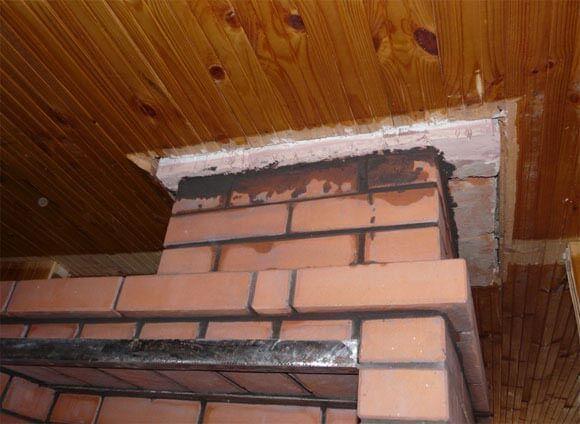
The masonry was raised to the level on which you want to connect the sleeve of the chimney. With the furnace it connects with metal corners. The free ends of the corners are inserted into the chimney. The junction thoroughly coat the clay with a solution. The sleeve can be arranged like a wall to the chimney. Then continue laying bricks. Shaft-mounted chimneys , the Device of the chimney with their hands on this type is the most common. To ensure the chimney is lightweight. The chimney is mounted directly on the fireplace or stove. Most often, this type is used in the bath furnaces. The advantages of the chimneys of this type include the possibility of creating it out of steel or asbestos cement. Device Device metal chimney does not differ from the previous two types. The only difference is that there is no need for fume sleeves, so as the chimney is installed directly on the stove. Also mounted chimneys do not need Foundation.
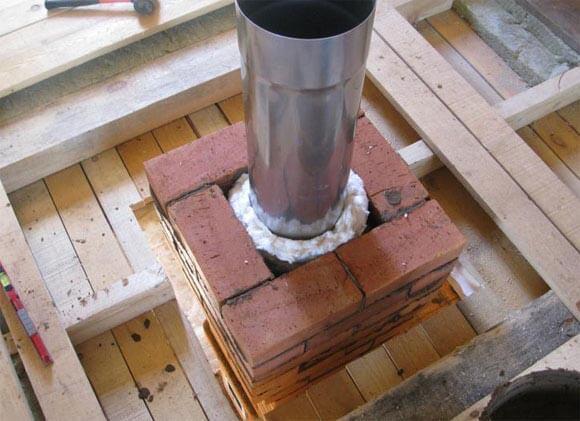
In order to achieve the best results in the construction of this type of fireplace, you can use the following tips:
www.youtube.com/channel/UCXd71u0w04qcwk32c8kY2BA/videos
Subscribe -https://www.facebook.com//
Coaxial chimneys All three of the previous ducts are used for boilers and stoves that operate on solid fuel (peat, wood, coal, etc.). But lately becoming more common boilers. For these boilers, the device of the chimney is a little different from solid. In this case, is often used coaxial duct . In order to understand the features of such a chimney you should understand the concept of "coaxial". The term means that within one second pipe are hidden. Connect the pipe to each other by spacers, which prevent the touching of two surfaces. Thus, each pipe can perform its role — one removes the products of combustion to the outside, the second is for fresh air intake. It should be clarified that this system interacts with the environment. For installation coaxial flue you must have: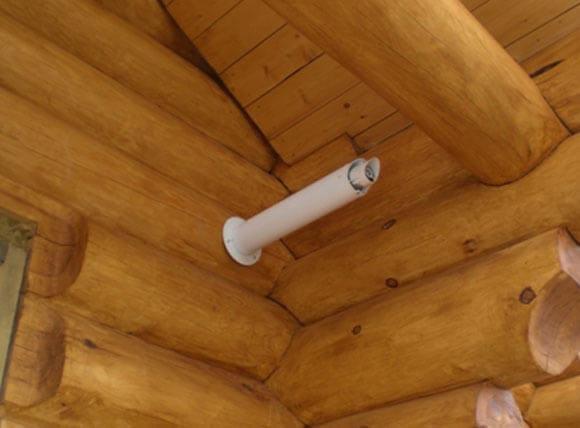
The device of the chimney in a wooden house begins with the fact that you should select the location of the outlet pipe to the street. It is recommended to arrange the outlet so that the pipe was as close as possible to the boiler. P. S. And remember, only by changing their consumption — together we change the world! ©
Source: kryshadoma.com/dymokhod/ustroystvo-dymokhoda-v-chastnom-dome.html

According to the General classification, there are following 3 type of construction of chimneys:
- shell;
- root;
- wall.

Device wall of the chimneyFlue cannot be arranged at the intersections of the walls or at the corners of the building. The thickness of the walls of the chimney must not be less than half brick. In order to attach the stove or fireplace to stenosoma the chimney, it is necessary to equip the sleeve. These subassemblies are part of the flue and have a horizontal direction. Rocker sleeve spread from a brick, the length of elements should not exceed 2 metres . In order to create sleeves, you need to take 2 steel area. The corners of the close up in the fireplace at the stage of its construction. They are placed at 6-7 cm below the excretory canal. The free ends of the elements close up in the chimney. They are placed in the pipe at the same distance from the output channel (6-7 cm). The parts are placed either horizontally or with a small bias towards output smoke. Formed on the basis of the corners of the laid brick, placing it flat (hence the distance of 6-7 cm.)

The wall sleeve can be of a thickness in the ¼ brick here, a brick put on an edge. Laying is carried out with ligation of the vertical joints. Her start with the organization of the Foundation, which is located on the floor or the top of the fireplace. The Foundation for the floor should be a flat area covered with concrete. On top of the basement is placed the first row of bricks. The angles need to align. After that, proceed to further masonry chimney made of brick. At this stage it is important not to forget about the necessity of the free space under the door to clean the chimney channel. In a wooden house in safety, it is necessary to coat the place in front of the fireplace sheet metal. Do the same with the sleeves. Indigenous chimneys This type of chimney is a separate brick tower, with a separate Foundation, which is not adjacent to the wall and, thus, to be at a certain distance from the stove or fireplace. Indigenous chimneys are built of brick.

The main advantage of the chimney is the ability to connect to a single pipe from several sources of smoke. But it is important that all ovens were placed on the same level. That is why this fireplace is used for homes with multiple occupancy stoves. Installation of the flue , the Device of the chimney in a private house starts with the Foundation. First escapes the pit, which corresponds to the size of the chimney. The depth of the pit is about 30 cm At the bottom of the pit poured a layer of crushed stone with gravel and then a layer of sand. The thickness of these layers should be approximately equal (i.e. 15 cm). Gravel and sand tamped and leveled. After the preparation of the "cushion", you can start pouring cement screed. To do this it is recommended that a liquid solution as this achieves the best alignment of the surface. Then you should wait until the screed is fully cured and only then begin to direct the masonry of the chimney. First, put the first layer of bricks. Then output the angles by using a level or plumb.

The masonry was raised to the level on which you want to connect the sleeve of the chimney. With the furnace it connects with metal corners. The free ends of the corners are inserted into the chimney. The junction thoroughly coat the clay with a solution. The sleeve can be arranged like a wall to the chimney. Then continue laying bricks. Shaft-mounted chimneys , the Device of the chimney with their hands on this type is the most common. To ensure the chimney is lightweight. The chimney is mounted directly on the fireplace or stove. Most often, this type is used in the bath furnaces. The advantages of the chimneys of this type include the possibility of creating it out of steel or asbestos cement. Device Device metal chimney does not differ from the previous two types. The only difference is that there is no need for fume sleeves, so as the chimney is installed directly on the stove. Also mounted chimneys do not need Foundation.

In order to achieve the best results in the construction of this type of fireplace, you can use the following tips:
- the chimney should be displayed so that it was as close to the ridge of the roof;
- the height of the chimney above the roof choose on the basis of the distance to the ridge. The optimum height of the tube can be determined from the following schemes:
-when the distance from the ridge less than 1.5 meters, height of the chimney above the roof must be equal to 50 cm;
-when the distance to the ridge from 1.5 to 3 m, the chimney may be displayed on the height of the ridge;
-if distance to skate more than 3 m of the chimney can be below the level of the ridge. - In the case of close placement of trees or wooden buildings, a flue pipe oborachivaemosti pipe for the chimney. It is necessary to reduce the risk of fire;
- the chimney must end with a visor that protected the tube from falling rain;
- at the end of the chimney must have a mesh, which is designed to eliminate fly out of the chimney unburned fuel particles .
www.youtube.com/channel/UCXd71u0w04qcwk32c8kY2BA/videos
Subscribe -https://www.facebook.com//
Coaxial chimneys All three of the previous ducts are used for boilers and stoves that operate on solid fuel (peat, wood, coal, etc.). But lately becoming more common boilers. For these boilers, the device of the chimney is a little different from solid. In this case, is often used coaxial duct . In order to understand the features of such a chimney you should understand the concept of "coaxial". The term means that within one second pipe are hidden. Connect the pipe to each other by spacers, which prevent the touching of two surfaces. Thus, each pipe can perform its role — one removes the products of combustion to the outside, the second is for fresh air intake. It should be clarified that this system interacts with the environment. For installation coaxial flue you must have:
- tip;
- the connecting clip;
- an elbow with a bend angle of 90 degrees;
- chimney pipe;
- decorative overlays.

The device of the chimney in a wooden house begins with the fact that you should select the location of the outlet pipe to the street. It is recommended to arrange the outlet so that the pipe was as close as possible to the boiler. P. S. And remember, only by changing their consumption — together we change the world! ©
Source: kryshadoma.com/dymokhod/ustroystvo-dymokhoda-v-chastnom-dome.html
